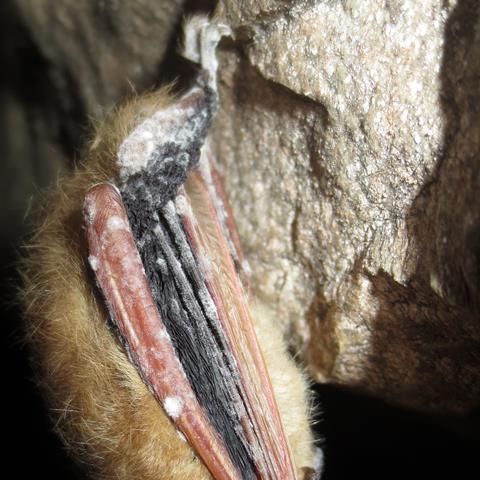Do you work in forensic microbiology, or have an interest in it? Click here to find out about our upcoming AMI event on the topic!
Stemming from research in a variety of fields, microbial forensics emerged as a discipline during the FBI assessment of the 2001 anthrax letter attacks. This prominent example of bioterrorism in the United States (US) occurred when spores of Bacillus anthracis, which causes anthrax, were mailed to at least seven individuals in the media and government. The impact was a surge of microbial forensics research on pathogens that could potentially be used as bioterror agents, with a focus on analytical methods to determine the short-term, often epidemiological, and long-term evolutionary histories of these pathogens. Bacterial genomics arose as a key component of the investigation, as it was critical in determining which strain of B. anthracis was involved and how lineages that had been distributed to labs around the world were related to each other. Thus, excluding the possibility of a natural outbreak and greatly narrowing the field of labs potentially containing this particular lineage.
The advancement of technology along with the increase in our understanding of bacterial population genetics and evolution opened the door for these methods to address other questions. In particular, advances in sequencing technologies enabled unprecedented discrimination among bacterial genomes by facilitating our ability to compare entire genomes and to assess the relationships among microbial samples. Many of the pathogens that could be involved in bioterrorist acts are zoonotic so these advances can be applied to microbial forensics in wildlife and livestock, as well as human cases.

The origins of anthrax
As a disease of livestock and other large ungulates, anthrax figures prominently in forensic microbiology in animals. For example, anthrax cases among heroin users in Europe were linked to drug contamination during transport, possibly in animal skins used along the trafficking route. Phylogenetic analyses involving a worldwide collection, linked clinical samples to those obtained in Turkey. This suggested that the heroin may not have been contaminated at its origin in Afghanistan, but that it may have passed through and been contaminated in Turkey when en route to Europe. Also no evidence for a bioterrorist event was identified.
A more comprehensive sample collection from this part of the world would increase confidence and geographic resolution to confirm these conclusions. This molecular epidemiological approach has also been used in other anthrax cases involving contaminated animal products such as hides and wool. Bacterial genomics also allows for investigation into the more ancient spread of this disease, such as the introduction of B. anthracis into North America, via humans, and the large game animals they hunted, across the Bering land bridge.
The genomic approach and analysis framework used in anthrax cases can be applied to the study of other wildlife and livestock pathogens such as plague, tuberculosis, tularaemia, brucellosis, and glanders. Microbial genomics has traditionally been expensive; research on human pathogens and/or bioterror agents has received the lion’s share of funding. The decline in sequencing costs and more widespread availability have enabled these genomic epidemiological approaches to be applied to studying wildlife and livestock pathogens; often in diseases where there are significant ecological and/or economic impacts. In 2013, genomics was employed to document the worldwide spread of the chytrid fungus that has been responsible for the global decimation of amphibians. For a different fungus, a genomics approach has been applied to assess the origin and spread of a pathogen of bats that causes the disease white-nose syndrome. Biek et al. used whole genomes to infer transmission patterns of bovine tuberculosis among badgers and cattle in the UK and Ireland. In similar work, genomic epidemiology applied to outbreaks of brucellosis in cattle, elk, and bison in the Greater Yellowstone Ecosystem in the western US, allowed an understanding of the timing of pathogen introductions and spread. In each of these cases, genomic approaches allow for large numbers of genomes to be compared against one another to assess pathogen dispersal, transmission, and evolutionary history, which provide critically needed context for microbial forensics.

Geo-location and Phylogenetics
A primary need for forensic investigations of pathogens is a comprehensive database of genomic data from isolates collected worldwide for each species of interest. While such a reference collection only rarely allows for precise source attribution—determining with certainty where an isolate originated—it does help focus the investigation and the exclusion of potential sources can be very powerful. The next step is to develop phylogenetic trees that detail the evolutionary relationships among strains. These relationships may be deep within the tree, showing more ancient connections, or may represent shallower branches indicative of more recent differentiation. The easiest material to obtain is from historical archival collections, which include laboratory reference strains. Malicious disease outbreaks have been identified by the genomic linkage to laboratory strains, which are not observed in nature. For clonal bacteria, a category in which many of these zoonotic pathogens belong, mutations that are diagnostic for specific lineages can be identified and linked to features such as geography. As detailed in the publications cited above, phylogenetic data can be related to geographic data to develop insights into how these pathogens have been disseminated either by humans, livestock, or wild animals.
The transition from using genomics for molecular epidemiology and determining evolutionary relationships to microbial forensics is conceptually simple but can be difficult in practice. Standard veterinary and public health investigations lack many of the material and methodological controls that judiciary systems require. Crime scene and evidence control systems that law enforcement investigations use would not be common for a public or veterinary health investigation. Without these, the eventual prosecution of perpetrators could be compromised. It is unreasonable for public health efforts to take on these additional forensic burdens and the best solution is for rapid engagement of law enforcement when an outbreak appears suspicious. This will require coordination between government agencies prior to the need for their cooperation. Wildlife, veterinary, public health, and law enforcement officials need to work as cooperating units to identify and then investigate disease outbreaks that result from criminal acts.









No comments yet